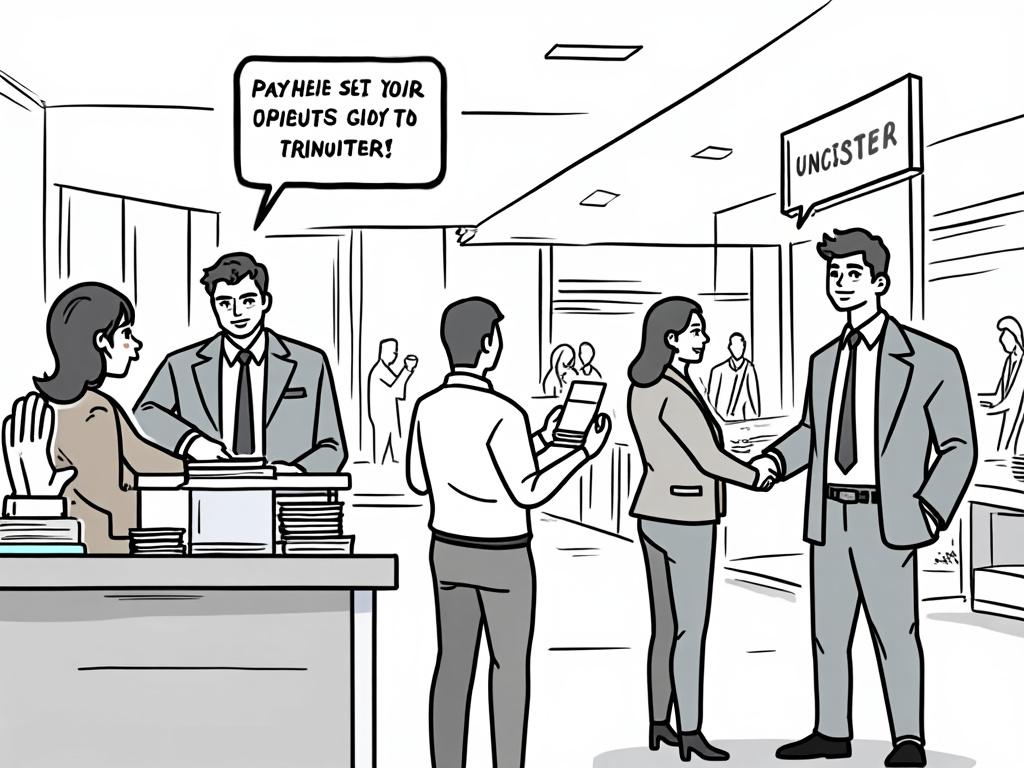
Tabby Registration for Business: Unlocking Growth Opportunities in the Digital Payment Revolution
Reading time: 12 minutes
Ever wondered why your customers abandon their carts at checkout? You’re not alone in this frustration. The answer might be simpler than you think: payment flexibility. In today’s competitive e-commerce landscape, offering buy-now-pay-later solutions like Tabby isn’t just a nice-to-have—it’s becoming essential for business survival and growth.
Table of Contents
- Why Tabby Matters for Modern Businesses
- The Tangible Benefits of Tabby Registration
- Step-by-Step Registration Guide
- Strategic Integration Approaches
- Security and Compliance Framework
- Measuring Success with Real Data
- Overcoming Implementation Challenges
- Frequently Asked Questions
- Your Growth Acceleration Roadmap
Why Tabby Matters for Modern Businesses
Let’s cut straight to the chase: 73% of consumers prefer shopping with retailers that offer flexible payment options, according to recent market research. Tabby isn’t just another payment processor—it’s a strategic growth tool that transforms how customers interact with your business.
Consider this scenario: Sarah, a 28-year-old professional, finds the perfect laptop on your e-commerce site. It costs $1,200—within her budget but a significant purchase. Without flexible payment options, she might hesitate, compare prices elsewhere, or simply close the tab. With Tabby’s installment plans, she can split this into four manageable payments, making the purchase decision immediate and stress-free.
The Market Reality Check
The Middle East and North Africa (MENA) region is experiencing a buy-now-pay-later explosion. Tabby operates across UAE, Saudi Arabia, Kuwait, and Egypt—markets where consumer spending is rapidly digitalizing. Here’s what makes this timing crucial:
- Regional Growth: BNPL adoption in MENA grew by 380% in 2023
- Demographic Advantage: 65% of the region’s population is under 35, driving digital payment adoption
- Economic Shift: Post-pandemic consumer behavior favors financial flexibility over traditional credit
The Tangible Benefits of Tabby Registration
Conversion Rate Transformation
Here’s where theory meets reality: businesses integrating Tabby typically see conversion rate improvements between 15-35%. But let’s dig deeper into why this happens.
Take Fashion Forward, a UAE-based clothing retailer. Before Tabby integration, their average order value was AED 280 with a 2.3% conversion rate. Six months after implementing Tabby:
- Conversion rate jumped to 3.1% (34% increase)
- Average order value rose to AED 420 (50% increase)
- Customer lifetime value improved by 28%
Flexible Payment Architecture
Tabby offers three core payment structures that cater to different customer psychology:
| Payment Option | Customer Benefit | Business Impact | Typical Use Case | Conversion Boost |
|---|---|---|---|---|
| Pay in 4 | 0% interest, 4 equal installments | Higher AOV, reduced cart abandonment | Fashion, electronics, home goods | 25-30% |
| Pay in 30 | Full payment delayed 30 days | Impulse purchase enablement | Seasonal items, gifts | 15-20% |
| Monthly Installments | 3-12 month payment plans | Premium product accessibility | High-value items, luxury goods | 40-50% |
Network Effect Advantages
When you register with Tabby, you’re not just adding a payment method—you’re joining an ecosystem. Tabby’s shopper network includes over 3 million active users across the MENA region. These customers actively seek out Tabby-enabled merchants, creating a discovery advantage for your business.
Step-by-Step Registration Guide
Ready to get started? Let’s walk through the registration process with practical insights that most guides won’t tell you.
Pre-Registration Preparation
Pro Tip: Before starting your application, ensure your business meets Tabby’s operational criteria. This preparation phase can save you weeks of back-and-forth communication.
Essential Documentation Checklist:
- Business License: Valid commercial registration (minimum 6 months operational history)
- Bank Statements: Last 3 months showing consistent transaction volume
- Website/App: Fully functional e-commerce platform with SSL certification
- Product Catalog: Clear product descriptions, pricing, and return policies
- Financial Records: Tax registration and basic financial statements
The Registration Journey
Step 1: Initial Application Submission
Visit Tabby’s merchant portal and complete the comprehensive business profile. This isn’t a 5-minute task—allocate 30-45 minutes for thoroughness. Incomplete applications face automatic delays.
Step 2: Risk Assessment Phase
Tabby’s risk team evaluates your business model, transaction history, and market positioning. This typically takes 3-5 business days. During this period, ensure your customer service team can respond to verification calls promptly.
Step 3: Technical Integration Planning
Once approved, you’ll receive integration documentation and API credentials. This is where many businesses stumble—don’t underestimate the technical requirements.
Common Registration Pitfalls
Based on merchant feedback, here are the top three registration obstacles and how to avoid them:
- Insufficient Transaction History: Tabby prefers businesses with at least 3 months of consistent online sales. If you’re newer, focus on building transaction volume through other channels first.
- Unclear Business Model: Clearly articulate your value proposition and target market. Vague business descriptions trigger additional scrutiny.
- Website Quality Issues: Ensure your site loads quickly, has clear navigation, and includes comprehensive terms of service and privacy policies.
Strategic Integration Approaches
Integration isn’t just about technical implementation—it’s about strategic positioning within your customer journey.
Platform-Specific Integration Paths
Tabby supports major e-commerce platforms with varying complexity levels:
Integration Complexity Comparison
Strategic Placement Optimization
Where and how you present Tabby options significantly impacts adoption rates. Here’s what successful merchants have learned:
Product Page Integration: Display Tabby payment options prominently on product pages, not just at checkout. This creates purchase confidence earlier in the buying journey.
Cart Abandonment Recovery: Implement Tabby messaging in cart abandonment emails. Messages like “Complete your purchase with 4 easy payments” recover 12% more abandoned carts on average.
Security and Compliance Framework
Security isn’t an afterthought with Tabby—it’s foundational to their business model and your peace of mind.
Data Protection Measures
Tabby operates under stringent security protocols that exceed regional requirements:
- PCI DSS Level 1 Compliance: The highest level of payment card industry security standards
- End-to-End Encryption: All sensitive data transmitted through 256-bit SSL encryption
- Tokenization: Customer payment information is never stored on merchant servers
- Fraud Detection: Real-time transaction monitoring using machine learning algorithms
Regulatory Compliance Across Markets
Operating across multiple MENA countries requires navigating diverse regulatory landscapes. Tabby handles this complexity, ensuring your business remains compliant with:
- UAE: Central Bank regulations for payment service providers
- Saudi Arabia: SAMA (Saudi Arabian Monetary Authority) guidelines
- Kuwait: Central Bank of Kuwait payment regulations
- Egypt: Central Bank of Egypt fintech regulations
Measuring Success with Real Data
Let’s examine how businesses actually measure Tabby’s impact beyond basic conversion metrics.
Case Study: Electronics Retailer Transformation
TechZone, a Kuwait-based electronics retailer, provides an excellent example of comprehensive Tabby integration benefits:
Pre-Tabby Baseline (6 months):
- Monthly revenue: $280,000
- Average order value: $340
- Customer acquisition cost: $45
- Return customer rate: 23%
Post-Tabby Results (12 months):
- Monthly revenue: $420,000 (+50%)
- Average order value: $485 (+43%)
- Customer acquisition cost: $38 (-16%)
- Return customer rate: 34% (+48%)
Advanced Analytics Integration
Successful Tabby merchants track these often-overlooked metrics:
- Payment Method Preference Shift: Monitor how customer payment preferences evolve
- Seasonal Impact Variations: Tabby usage often spikes during Ramadan and holiday seasons
- Customer Segment Performance: Different demographics respond differently to payment options
- Geographic Performance: Track which regions show highest Tabby adoption rates
Overcoming Implementation Challenges
Let’s address the real obstacles businesses face when implementing Tabby, along with practical solutions.
Challenge 1: Customer Education and Adoption
The Problem: Despite growing awareness, some customers remain hesitant about buy-now-pay-later services.
The Solution: Implement a comprehensive education strategy:
- Create simple explainer videos showing the payment process
- Add customer testimonials about positive Tabby experiences
- Offer first-time user incentives (5% discount on first Tabby purchase)
- Train customer service staff to explain Tabby benefits confidently
Challenge 2: Cash Flow Management
The Problem: Businesses worry about delayed payments affecting cash flow.
The Solution: Understand Tabby’s settlement structure and plan accordingly:
- Tabby pays merchants upfront (minus fees), not when customers complete payments
- Settlement typically occurs within 1-2 business days
- Factor Tabby fees (2.5-4% depending on volume) into pricing strategy
- Use Tabby’s volume to negotiate better terms with suppliers
Challenge 3: Integration Technical Issues
The Problem: Technical integration can be complex, especially for custom-built platforms.
The Solution: Follow a structured approach:
- Start with sandbox testing before live implementation
- Allocate sufficient development resources (don’t rush)
- Test all user scenarios, including edge cases
- Implement comprehensive error handling and user feedback
Frequently Asked Questions
What are the costs associated with Tabby integration?
Tabby operates on a transaction-based fee structure ranging from 2.5% to 4% per transaction, depending on your monthly volume and business type. There are no setup fees, monthly fees, or hidden charges. The fee is only applied to successful transactions, making it a performance-based investment in your business growth.
How quickly can I start accepting Tabby payments?
The timeline varies based on your business setup and technical requirements. For established businesses with standard e-commerce platforms (like Shopify), you can be operational within 5-7 business days. This includes 3-5 days for application approval and 1-2 days for integration and testing. Custom platforms may require 2-3 weeks for complete integration.
What happens if a customer defaults on their Tabby payments?
This is where Tabby’s value becomes clear—you don’t bear the default risk. Tabby pays merchants upfront for approved transactions, regardless of whether customers complete their payment schedules. Tabby handles all customer payment collection, late fees, and default management, protecting your business from financial exposure while maintaining customer relationships.
Your Growth Acceleration Roadmap
The digital payment landscape is evolving rapidly, and businesses that adapt early gain significant competitive advantages. Tabby registration isn’t just about adding another payment option—it’s about positioning your business for sustainable growth in an increasingly competitive market.
Your 30-Day Implementation Plan:
- Week 1: Complete business documentation gathering and submit Tabby application
- Week 2: Plan integration strategy and allocate technical resources
- Week 3: Implement integration and conduct thorough testing
- Week 4: Launch with customer education campaign and monitor initial metrics
The MENA region’s digital commerce growth shows no signs of slowing. By 2025, experts predict that buy-now-pay-later services will account for 15% of all e-commerce transactions in the region. Early adopters are already establishing market positions that will be difficult for competitors to challenge.
Consider this: every day you delay Tabby integration represents missed conversion opportunities and potential revenue. Your competitors who have already integrated flexible payment options are capturing customers who might have been yours.
What’s your next move? Will you join the growing community of businesses unlocking growth through strategic payment innovation, or will you watch from the sidelines as the digital payment revolution transforms your industry?

Article reviewed by James Callahan, Visionary Real Estate & Wealth Strategist, on June 23, 2025



